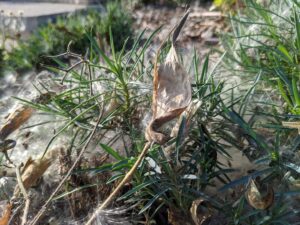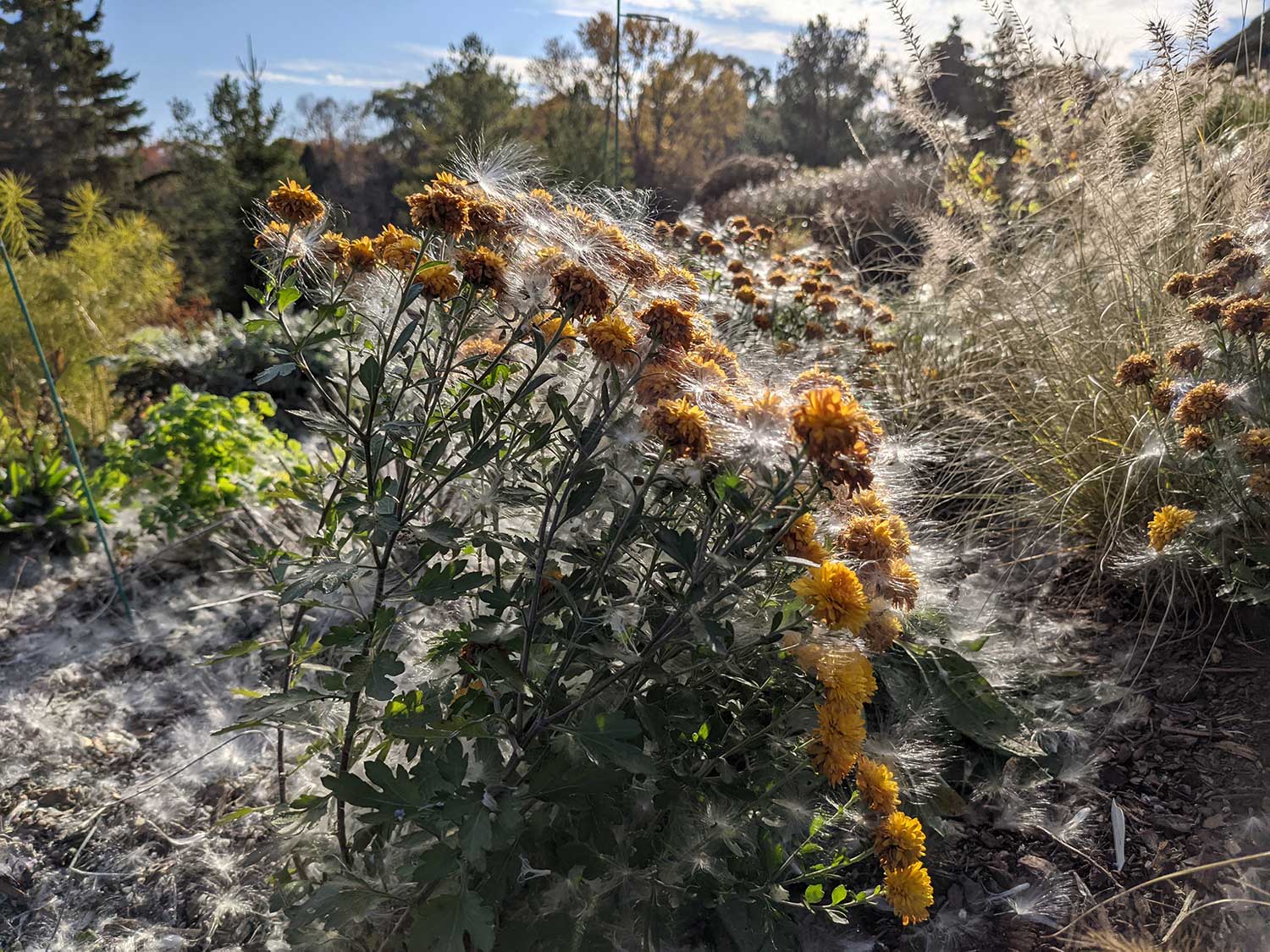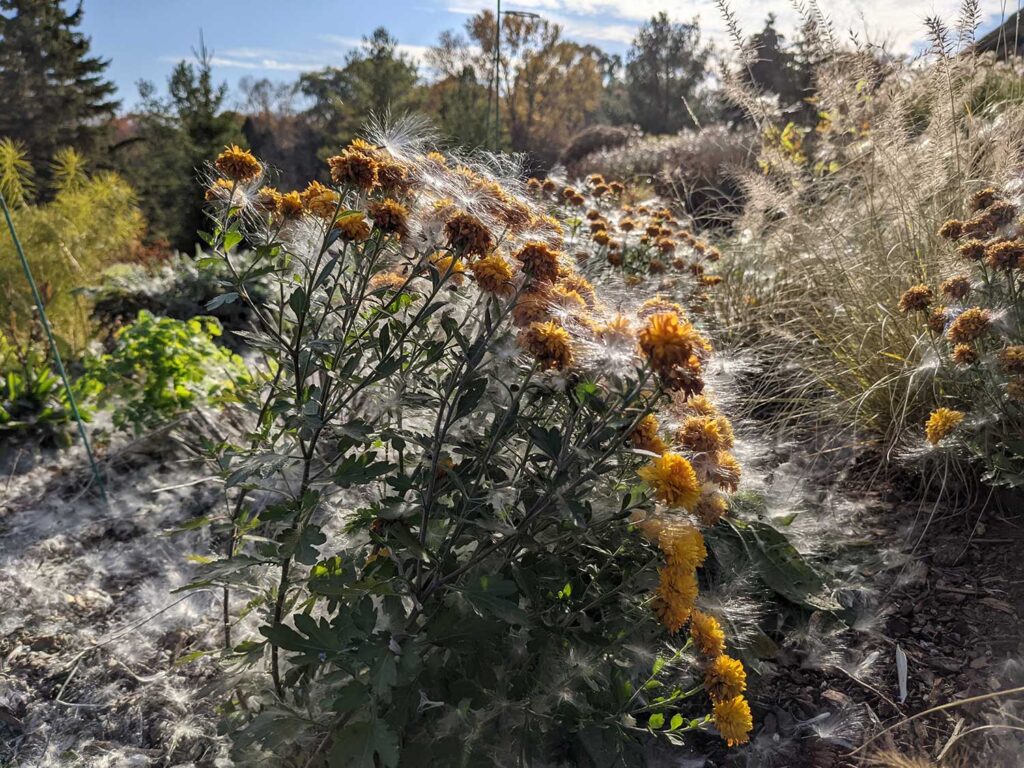 Milkweed, Butterfly Weed, and Silkweed are all common names referring to Asclepias. Common names that are descriptive of notable plant characteristics. Milky sap exudes from freshly opened tissue of most of the species. Butterflies love to flit around the flowers, eating and pollinating as they move about the often-fragrant flowers. The silky fluff that floats the seeds to new destinations are a pleasure to behold.
Milkweed, Butterfly Weed, and Silkweed are all common names referring to Asclepias. Common names that are descriptive of notable plant characteristics. Milky sap exudes from freshly opened tissue of most of the species. Butterflies love to flit around the flowers, eating and pollinating as they move about the often-fragrant flowers. The silky fluff that floats the seeds to new destinations are a pleasure to behold.
Asclepias have showy pink, white, yellow, green, red, or orange flowers that burst out in mid to late summer. Most are sweetly fragrant, the pinks seemingly more intense in the Midwest. All species provide food for hummingbirds, pollinators of all types, and many butterflies beyond the oft-noted Monarch. They are relatively low maintenance and not particularly heavy feeders. Growing conditions vary, but most do well in full to partial sun locations. Wet, moist, or dry well-drained soils, most Asclepias are wonderfully tolerant if sited according to the needs specific to each species. Site them well and then leave them alone. Once established, moving them about does not make for happy plants.
Depending on your perspective, plants in the family Asclepidaceae may be desirable for landscape use or become the bane of a gardener’s existence. There are great cultivars that will perform beautifully in a planned landscape. Asclepias tuberosa “Hello Yellow” is a favorite for the bright yellowish orange, flat-topped flower clusters (umbels). This plant matures slowly but will spread easily by seed requiring removal of pods prior to seed dispersal. If not accomplished in a timely manner, expect to be pulling quite a few babies throughout the following few years. In a wet area, try Asclepias incarnata, or swamp milkweed. It is a relatively well-behaved plant and will do well in moderate to wet soil conditions.
According to my dear friend Allan Armitage, milkweeds “have a good vase life” if treated properly upon cutting. The proscribed treatment is to immediately immerse the cut stem(s) in warm water and then refrigerate for 12 hours. Although some recommendations encourage flaming the cut stems before immersing in water, Dr. Armitage says to save yourself the effort as gains are negligible.
Ever wonder if there is a use for those delightful seed heads that float about? Well, indeed there can be. The white silky fuzz attached to Asclepias species (whose seed is biologically geared toward air dispersal) is called floss. Floss has some interesting characteristics. It is hollow, which makes it light, helping the seed to stay aloft during dispersal. The floss is covered with a waxy substance that repels water, making it buoyant and able to hold up to about 30x its own weight. It has historically been used for life jackets and other necessary buoyancy devices. We may see a return of use as experiments in the clothing arena continue. Although floss repels water, it has been found to absorb oils. Trials and experiments are under way to encourage production for use in materials to contain oil spills.
If these plants have such lovely qualities, why the love/hate relationship with Asclepias? They are known to contain steroid compounds (Cardenolide glycosides) with heart arresting effects. In addition, there is a known toxicity to animals when consumed. It is a serious issue if crops grown for animal fodder are full of Asclepias.
While most information available encourages gardeners to grow Asclepias for the Monarch larvae to feed upon, do be cautious with the tropical selections. When using Asclepias curassavica, or blood flower, in warm southern locations, please cut it back during the fall and winter. This beautiful tropical Asclepias has the potential to change the migration, feeding, breeding habits, and the overall health of Monarch butterflies and larvae. For more information on that topic, check out monarchjointventure.org.

